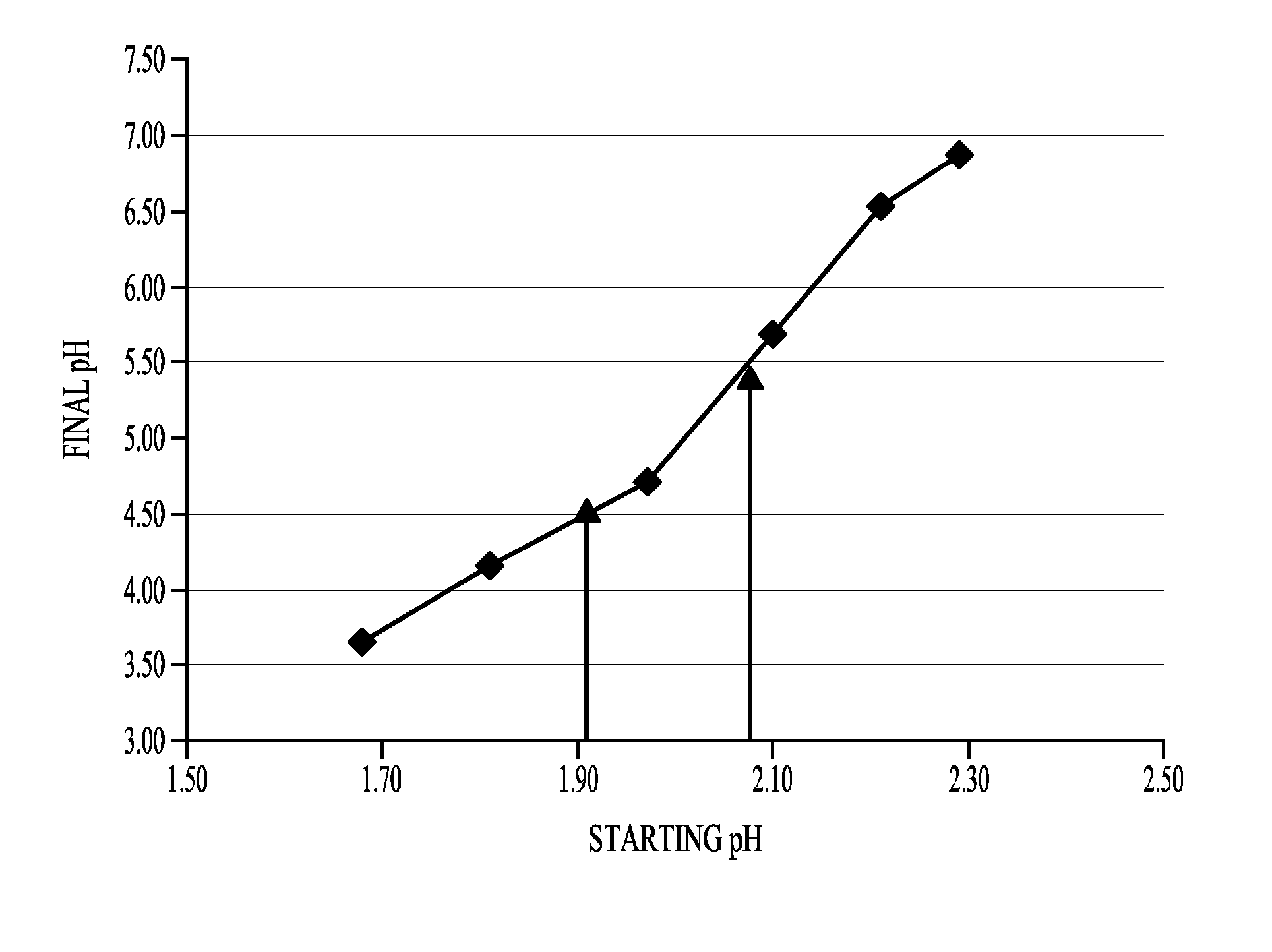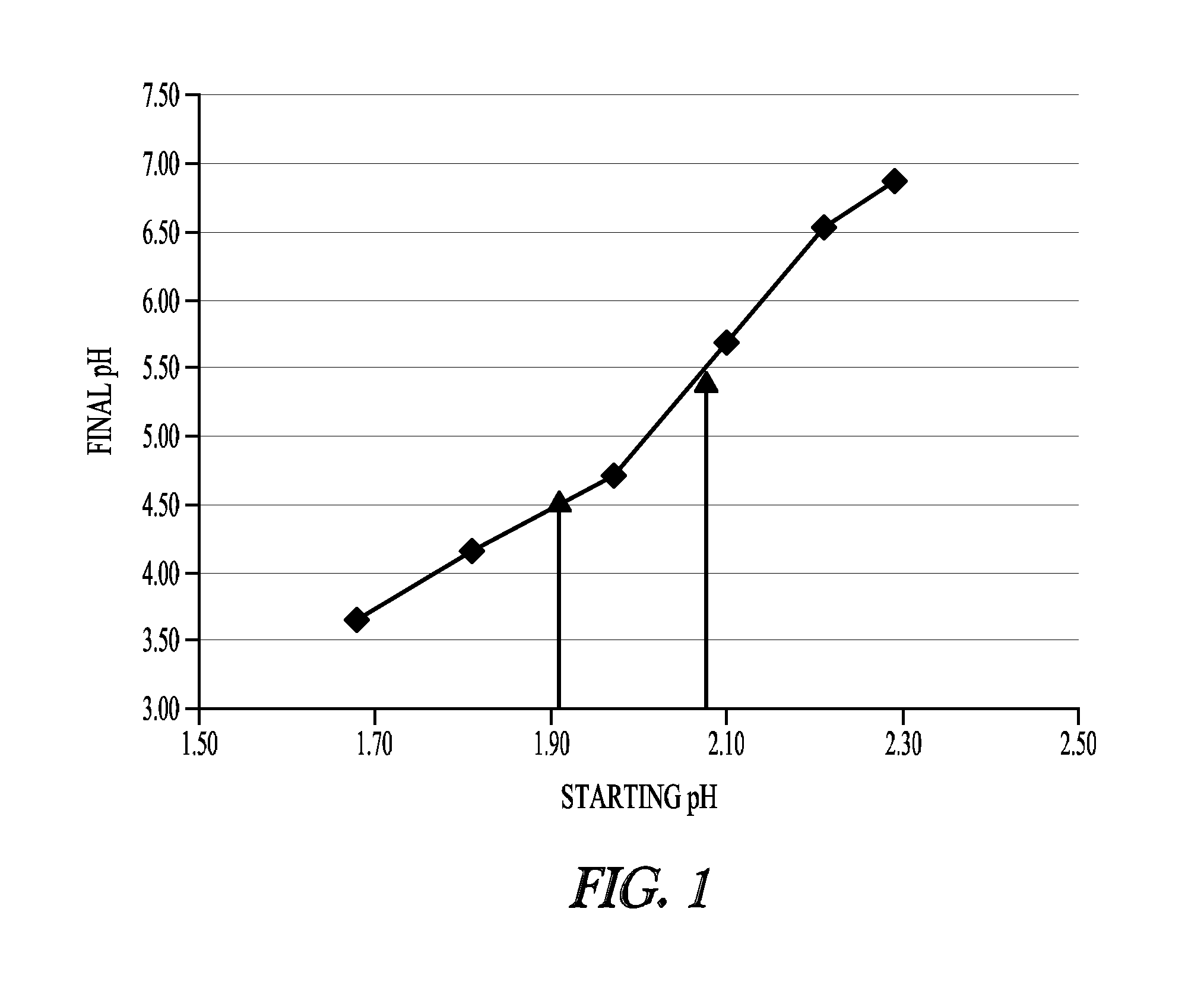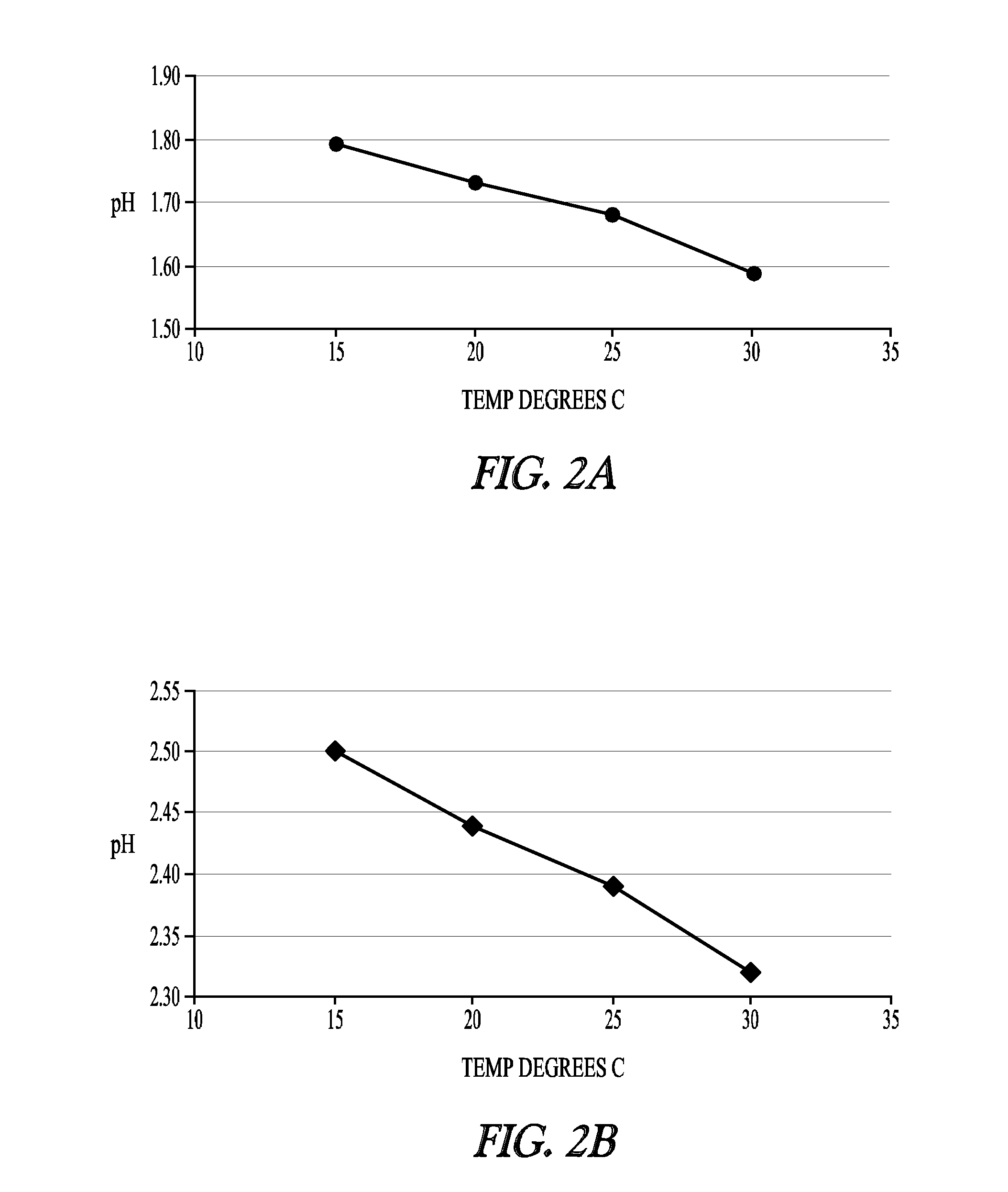Cysteine for physiological injection
a technology of cysteine and injection, which is applied in the direction of aerosol delivery, peptide/protein ingredients, drug compositions, etc., can solve the problems of patient's oxygen deprivation, patient's inability to stop breathing, and patients' literal paralysis by neutruscular blocking agents
- Summary
- Abstract
- Description
- Claims
- Application Information
AI Technical Summary
Benefits of technology
Problems solved by technology
Method used
Image
Examples
example 1
Manufacture of Physiological Cysteine Solutions
[0222]This Example illustrates desirable compositions, pH ranges and storage conditions for physiological solutions of cysteines.
[0223]To develop a stable cysteine formulation for physiological administration, several factors were considered. First, the natural pH of cysteine hydrochloride solutions at concentrations of 50 mg / ml or more in 0.9% saline is very low—about pH 0.8 to pH 1.0. Second, when administering cysteine, venous irritation or trauma can be avoided by administering cysteines solutions with pH values of 4.0-5.0. Third, cysteine is not soluble at concentrations greater than 50 mg / ml in its base form, and this concentration is generally too dilute for convenient administration to a patient. Instead, a solution containing 150-200 mg / ml or more cysteine is much more convenient for intravenous injection.
[0224]This Example illustrates what types of cysteine formulations can be made and stored under conditions that avoid precip...
example 2
Cysteine Precipitates when Solutions are Exposed to Air
[0263]The Example shows that exposure of low pH cysteine solutions to air during neutralization leads to precipitation of the cysteine. In this Example, L-Cysteine Hydrochloride Monohydrate formulations were tested for formation of visual particulate matter after mixing with the Tris neutralizing agent.
Materials and Methods
[0264]The following supplies and equipment were employed:[0265]1. Tris (hydroxymethyl)-aminomethane, 99.9%, Ultrapure grade, Lot 17120CH[0266]2. L-Cysteine Hydrochloride Monohydrate, Sigma Aldrich, R&D Manufacturing Grade, Lot 087K0707611[0267]3. Sodium Acetate Anhydrous, JT Baker, ACS Grade, Lot B31151[0268]4. L-Ascorbic Acid, Sigma Aldrich, Ultra Grade, Lot 106K0053[0269]5. EDTA Calcium disodium salt, hydrate, 98% pure, Aldrich Lot 01929 KH[0270]6. Glacial Acetic Acid, Mallinckrodt, USP Grade, Lot E40005[0271]7. 6N Sodium Hydroxide, ACS Grade, Ricca Chemicals Lot 4708124[0272]8. Class A volumetric glassware[...
experiment 2
Results show that by reducing or eliminating the exposure of cysteine mixed with TRIS to air increases the time observed for particle formation.
[0310]As illustrated by Experiment 1, the air exposure during brief pH adjustments and mixing occurring for approximately 20 minutes led to particle formation. The particles observed were most likely Cystine as opposed to contaminating particles introduced by sample handling. Experiment 2 shows that Formulations 1, 3 and 5 were particle free for at least 24 hours at a pH of about 5. Exposure of the solutions to air should be minimized or eliminated to control the formation of particles after mixing. Across the pH values monitored for visual particulate matter formation, Formulations 1 and 5 gave the longest times before particulate matter was observed (see FIG. 3).
PUM
| Property | Measurement | Unit |
|---|---|---|
| concentration | aaaaa | aaaaa |
| concentration | aaaaa | aaaaa |
| concentration | aaaaa | aaaaa |
Abstract
Description
Claims
Application Information
 Login to View More
Login to View More - R&D
- Intellectual Property
- Life Sciences
- Materials
- Tech Scout
- Unparalleled Data Quality
- Higher Quality Content
- 60% Fewer Hallucinations
Browse by: Latest US Patents, China's latest patents, Technical Efficacy Thesaurus, Application Domain, Technology Topic, Popular Technical Reports.
© 2025 PatSnap. All rights reserved.Legal|Privacy policy|Modern Slavery Act Transparency Statement|Sitemap|About US| Contact US: help@patsnap.com



